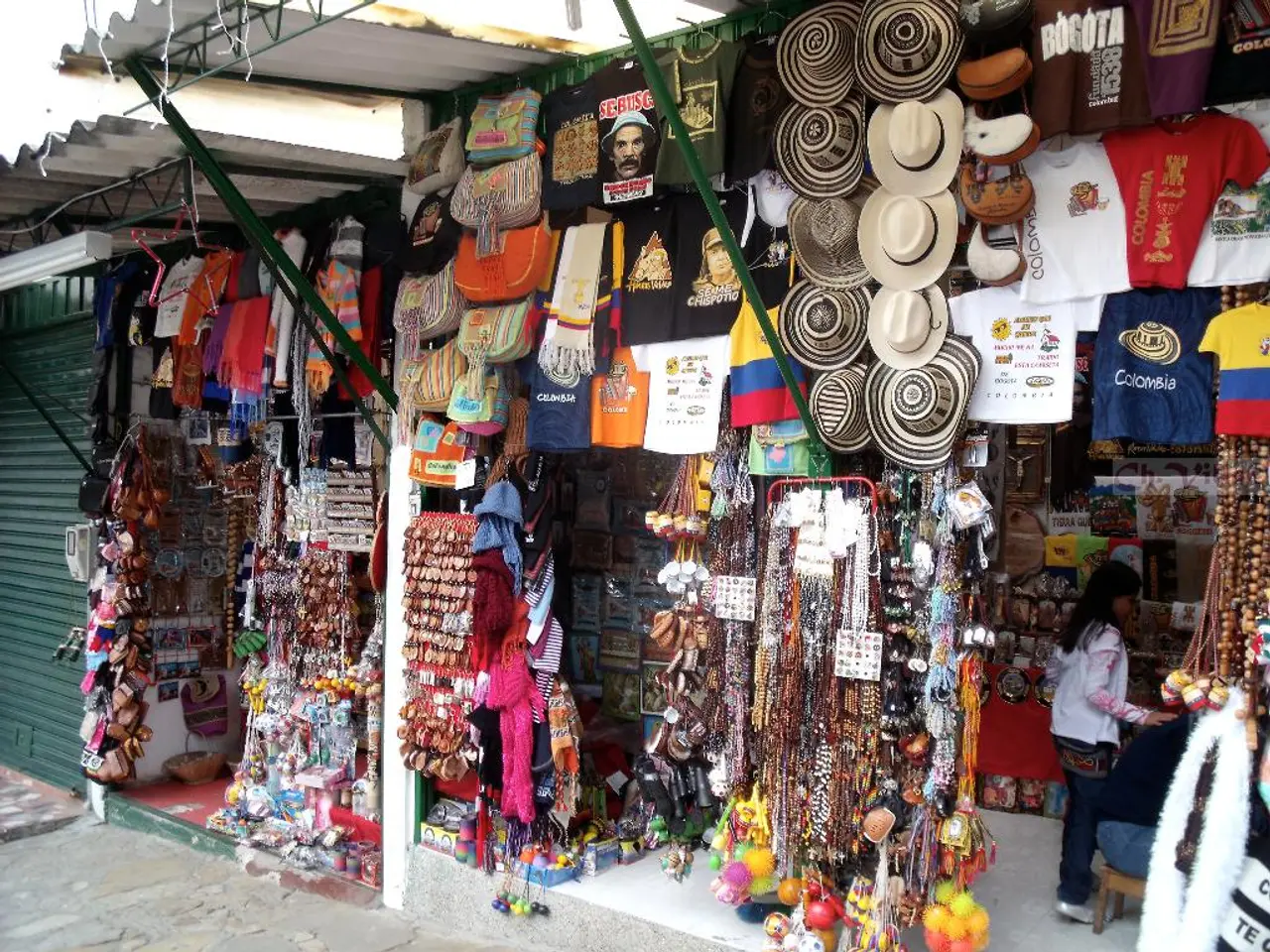Charity Receives Tracking Device in Donated Footwear, Prompting Organization to Address the Matter
In a bid to shed light on the destination of donated clothes, German influencer Moe.Haa embarked on an experiment, slipping an Apple AirTag into a pair of sneakers and donating them through the German Red Cross [4]. The sneakers, it was discovered, traveled a total distance of approximately 497 miles, making their way from Germany to a second-hand clothing market in a small town in Bosnia-Herzegovina [1].
The sneakers were being sold for 10 euros (around 20 BAM) at the market, raising questions about the final destination of donated items [2]. This pattern is not unique to Moe's project; Brandy Deason, from Houston, conducted a similar AirTag experiment to expose problems in plastic recycling [5].
The German Red Cross, in response to Moe's findings, explained that some donated clothes not suitable for direct donation are sold off to recycling or resale companies [6]. The funds from these sales are funneled back into humanitarian efforts. However, the lack of transparency in the handling of donated items might affect the public image of non-governmental organizations [7].
It appears that clothes donated to the German Red Cross often do not directly reach needy individuals but instead end up being sold in resale markets abroad [2][1]. This suggests that donations are frequently funneled into second-hand clothing markets—either to raise funds for charitable activities or because direct distribution is logistically complex. While this resale can generate income for charitable causes or local businesses, it also means the donated items do not always go directly to the original intended recipients.
No direct sources confirm systematic free distribution by the German Red Cross, and the tracking of donated shoes revealed their resale in foreign markets, highlighting a common practice in clothing donation chains [2]. This reflects a broader global issue where donated clothes from developed countries circulate through commercial second-hand markets in developing countries rather than immediate charity distribution [3].
As environmental challenges are tackled and ethical practices become more important, experiments like these push for a closer look at how donated items are managed. These revelations encourage everyone to ask questions about how well charitable efforts reach those they're meant to help, without unexpected detours along the way.
- The revealing experiment conducted by Moe.Haa with an Apple AirTag in a donated pair of sneakers exposed that donated clothes can often end up being sold in second-hand clothing markets, both abroad and within their originating countries.
- While the funds generated through the sales of donated clothes can contribute to humanitarian efforts, the lack of transparency in their handling might affect the public trust towards non-governmental organizations.
- The resale of donated items can provide income sources for charitable causes or local businesses, but it also means they may not always reach the original intended recipients, raising queries about the effectiveness of charitable efforts.
- With ethical practices and environmental concerns becoming paramount, such experiments spark discussions on the need for increased transparency and improved management of donated items, ensuring they reach their intended recipients without unnecessary detours.




